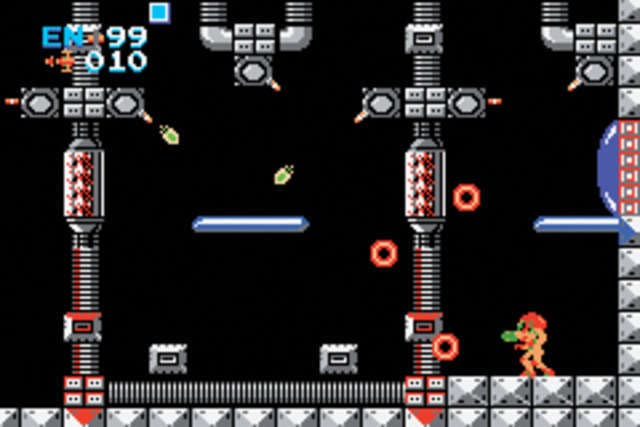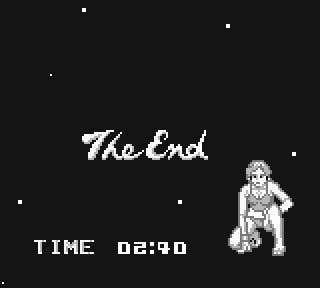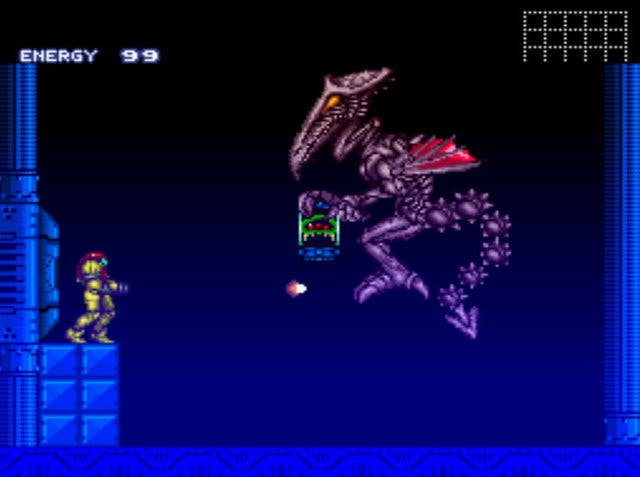The History of Metroid
Save us, Samus.
After what feels like a wait of ninety million years, this week finally sees Metroid Prime 3: Corruption reach our Euroshelves. To mark this epoch-making event, and to give me an excuse to dust off some really ace old games, here's a potted history of the critically acclaimed franchise so far. If you've always wondered what the fuss was about, hopefully this will entice you to sample some classics. If you're already in love with Nintendo's resourceful lady bounty hunter and her spherical gifts, maybe this will tickle some happy memories up from the sludgy bottom of your mind.
1986 - Meet Metroid
The first Metroid presciently set the tone for the future of the franchise by appearing first on a struggling format and only reaching foreign shores after lengthy delays. Metroid was initially released only for the Famicom Disc System in 1986. The FDS was one of Nintendo's first attempts to monkey around with new storage methods, but its success was limited and it never made it beyond Japan. One year later, Metroid finally appeared on the plain old NES in North America and then, another year later, we pox-ridden Europlebs were deemed worthy of having a copy to call our own. Hmm. Sounds familiar.
Despite this rather awkward staggered release, the rather revolutionary nature of the game was immediately apparent. The story seemed obvious enough - a tough bounty hunter called Samus Aran is given the task of ridding the planet Zebes of malignant lifeforms known as Metroids, before evil space pirates use them to destroy the blah blah blah. And at first glance it seemed like a fairly predictable shooty platform game, albeit one where you could shoot in one direction and run in another. But those who tried playing it like a platform game soon found themselves stumped. Where's the end of the level? Why can't I get through there? What do all these pick-ups do? WHY HAVE I TURNED INTO A BALL?

See, Metroid was one of the very first free-roaming games, dumping rigidly defined levels in favour of one expansive gameworld, and the concept of gaining new abilities and then backtracking to use them to access previously blocked areas of the map was pretty much unheard of in this era of left-to-right linear leaping. The innovations didn't stop there. Metroid was also one of the first games to use passwords to allow the player to save their progress (the Nintendo Disk System actually allowed proper saved games) and, as a result, it features some of the most famous cheat codes in gaming history - the identity of JUSTIN BAILEY, whose name unlocks pretty much everything in the game is still hotly debated by hot debating people. His cheat even spoils the sexy twist at the end.
That's right, Metroid confused many young males when, depending on how quickly the game was beaten, cheeky Samus Aran removed her armour to reveal a shapely pixellated female form beneath. If you were really good, you even got to see her undies. And they say there's no place for wimmins in games. Tsk. While it's easy to scoff at such clunky sensationalism now, at the time this revelation was like The Crying Game, The Usual Suspects and The Sixth Sense all rolled into one. And dressed in a leotard. I'll admit, it's coloured my expectations of enigmatic faceless space soldiers ever since, and I was hugely disappointed when I reached the end of Halo and Master Chief stubbornly refused to reveal that he was really a Mistress Chief all along. I mean, I had tissues ready and everything.
1991 to 1994 - The original trilogy

Having titillated her audience like a dirty space whore, Samus wouldn't resurface until 1991, when the imaginatively titled Metroid II: Return of Samus debuted on the Game Boy. Metroid II, much like the second Mario and Zelda games, is now viewed as the odd-one-out of the series. Unlike the more adventure-centric exploration of the first game, new areas were now opened up by killing a set number of Metroids - a genocidal goal that still rubs many fans the wrong way. On the plus side, the game did introduce a slew of new weapons and abilities, many of which became series staples, most notably the ability to jump and stick to walls in your morph ball form.
For all its flaws, Metroid II ends on a high note as Samus is confronted by the last Metroid left alive by her savage killing spree. This baby alien thinks Samus is its mummy and, unable to pop a cap in its ass (not that it has an ass, it's a blobby thing) our maternal heroine scoops up the last of the species and blasts off into space. Not only is this about as thought-provoking as videogame finales got in 1991, it also set the stage for the next game in the series, where all these fine ingredients were finally whipped up into a delicious broth of GENIUS.

Super Metroid arrived in 1994, and I already gushed embarrassingly all over its face a few weeks ago when it popped up on the Wii's Virtual Console. Everything that needs to be said can be found through that blue text portal, but for those who are click-shy it really is this simple: Super Metroid takes all the good, often great, ideas from the first two games and realises them in gorgeous SNES-o-vision. Not only was the gameplay absolutely beautifully pitched, taking the free-roaming concept of the first game and bringing it to life with smart epic design work and a dramatist's sense of pace, but the game took the idea of the last surviving Metroid and actually spun it out into a poignant story that both made sense and required Samus to become a character rather than a mere avatar. Thematically rich and thrilling to play, Super Metroid took the series to new heights and won over a new legion of fans.
So, having released one of the most timeless and beloved games in the history of the medium, what would you do next? If you're Nintendo, the answer is, "Put it on the shelf and leave it there for the best part of a decade."







.png?width=291&height=164&fit=crop&quality=80&format=jpg&auto=webp)
